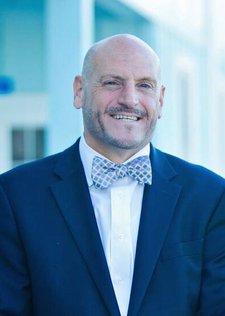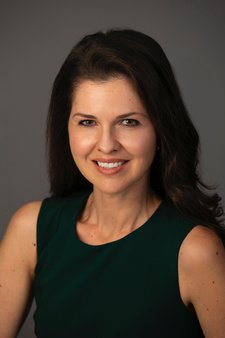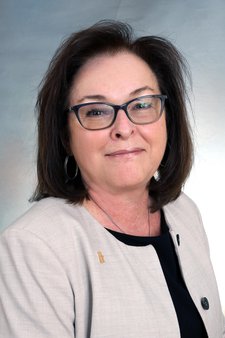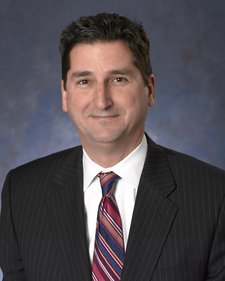
Dan Doonan, Contributor
Feb. 22, 2023
Next week at the National Institute on Retirement Security’s 14 th annual retirement policy conference, veteran financial journalist Mark Miller will share insight from his new book, Retirement Reboot: Commonsense Financial Strategies for Getting Back on Track ( Agate Publishing, January 2023).

Millions of Americans just aren’t financially prepared for retirement and may need a retirement reboot.
Getty Images
The book serves as a guide for the millions of Americans who just aren’t financially prepared for retirement. He offers insight on how to make the most of remaining working years and explains core decisions that can improve a person’s retirement outcomes — even if retirement is just a few years away.
In this Q&A, Mark discusses the scope of the savings shortfall, how we got here, and steps individuals and policymakers can take to improve retirement outcomes.
What’s your estimation of how many Americans are facing a retirement income shortfall and need a “retirement reboot?”
The numbers tell us that a very large segment of Americans nearing retirement need to heed these foundational strategies. Federal Reserve data indicates that the median balance in a retirement account in 2019 for a working household nearing retirement (age 55-64) was just $144,000 - an amount that will not last very long in retirement. And it looks worse when you look beyond the median figures - most of the assets are being accumulated in the two highest quintiles of income.
The Elder Index, produced by the Gerontology Institute at the University of Massachusetts Boston, measures the cost of living for older people living as couples or alone. It is built around the typical budgets of seniors, and it shows that roughly half of Americans over age 65 living alone have incomes that are below the index.
How did we get here?
The decline of defined benefit pensions in the private sector certainly is one important factor. That has left millions of American workers to manage saving for retirement on their own. But only about half have access to a workplace 401(k) plan, and many simply don’t have income high enough to save for retirement when they’re also juggling the high cost of housing, staying out of debt and saving to send their children to college.
The ups and downs of the economy also have taken their toll. A worker in her mid-fifties today has been in the labor force for four recessions - and two of them were very severe. Millions of people lost their jobs, their homes and retirement savings during the Great Recession. While most ultimately went back to work, they often did so with lower salaries. And, the losses they sustained during the recession aren’t recouped - those are permanent setbacks that compound over time.
Congress passed and President Biden signed into law new retirement legislation, SECURE 2.0. Will it help pave the way for the average American to get back on track for a secure retirement?
Many of the changes in this legislation will help only the most wealthy retirement savers, who need the help least - for example, further delaying the age for Required Minimum Distributions. It does include some changes that aim to expand access to savings plans for middle- and low-income households, and provides incentives for them to save. But on the whole, I think it’s a very incremental step in terms of the help it will provide to average Americans.
What motivated you to write Retirement Reboot?

Retirement Reboot serves as a guide for the millions of Americans who just aren’t financially prepared for retirement.
Agate Publishing Inc.
I’ve been writing about retirement for 15 years now - I’ve written more than 1,000 articles and interviewed more than 3,000 people. Over time, I’ve been struck over and over by the way that personal finance journalism focuses most on those who least need the help - higher income households that have built up sizable portfolios. I really felt the need for a book for the rest of us - people getting close to retirement who haven’t been able to save, and will be relying mostly on Social Security.
So what can those on the cusp of retirement do?
The book describes six “levers'' that can be pulled to improve retirement outcomes. They’re not necessarily easy, but they’re not gimmicks, either. And they won’t all be right for all readers. The list includes taking the time to make an actual plan, considering the option of working longer, optimizing Social Security and Medicare, and leveraging home equity. All of these steps have the potential to make a very meaningful difference, and people who are within ten years of retiring still have time to take advantage of these strategies.
And some of these chapters will be of interest to readers up and down the income scale - for example, we all need to optimize Social Security and make smart decisions about Medicare. Working longer is a strategy that should at least be considered for people in many different economic circumstances.
Some proposals call for expanding Social Security. How much would this help improve retirement outcomes?
That all depends on how much we expand benefits, when we do it and how quickly higher benefits are phased in.
The first step on Social Security must be to avert the exhaustion of its trust fund in 2035 - if that is allowed to happen, the result will be a disastrous across-the-board benefit cut of 20 to 25 percent over time. That’s an important start, but I’d like to see us go much further. We need to boost the amount of pre-retirement income that Social Security replaces, especially for lower- and middle-income households who rely on the program most.
The pushback against this type of benefit expansion is that spending more on Social Security is unaffordable, and will drive up our already-high level of federal debt and deficit. But Social Security is eminently affordable for a country as wealthy as ours. This is really more a question of values than it is dollars. As a country, we always manage to find the money for things when we want to do them.
What other steps should policymakers take to help ensure Americans can be self-sufficient in retirement?
I’d like to see us push back on the tide of privatization of Medicare with the rapid growth of Medicare Advantage, the commercial managed care alternative to the traditional program. The program is raising the overall cost of Medicare for taxpayers and beneficiaries because it is reimbursed by the federal government at a higher per capita rate than in the traditional program. And, it’s narrowing beneficiaries’ choice of health care providers. Right now, the playing field is tilted in the favor of the insurance companies, but there are some sensible reforms we could make that could help avert traditional Medicare withering away on the vine. Right now, I’m very concerned that could happen.
What advice would you offer younger workers so they can avoid the bleak retirement outlook so many near-retirees are facing today?
If at all possible, start saving for retirement early because time is on your side. Even small contributions now can grow impressively over time due to the magic of compounding. As you do that, pay careful attention to the fees you are paying - you want to be in the lowest-cost mutual funds possible, and that means passive funds that invest in the total stock market. Also consider a Roth option, which means you’re getting the taxes out of the way now rather than later on when you retire - this can be a terrific option for younger savers.
All that said, saving for retirement shouldn’t be the first priority. Number one is to get rid of any high interest rate debt on credit cards or a student loan. Number two is to build up three to six months of funds that can be tapped to meet unexpected emergency needs. After that - save as much as you can for retirement.
© 2024 Forbes Media LLC. All Rights Reserved
This Forbes article was legally licensed through AdvisorStream.








